

Finally, the deadline looms for the Tony Bartozek Memorial "I'm Not A Modeling Loser" contest. It's the weekend before the club
meeting on Monday - iff you've entered, is your model done? Or, will the paint still be drying on Monday evening at 7pm? Your cocky
club president over-committed himself this year. It is most unfortunate that I won't be finishing the LAV-25 "Piranha" to Buffalo
Police Tactical Vehicle like I originally hoped. I will, however, have two 1/72nd scale Airfix Harriers completed. I did underestimate
the length of time that these would take to complete, so I had to make an executive decision: finish two of the three or none of the
three. This, if my math is correct, is a 66% completion rate. Maybe next year I won't be so confident on my finishing abilities.
As far as these Airfix kits go, they are very, very good. The engraved details are superb, and the plastic is easy to work. The assembly instructions rival those of Tamiya and Hasegawa and the decals are nicely rendered as well. There were some issues to deal with; the jet engine intakes are separate from the fuselage and you get two sets of them depending on how you want the plane configured: in-flight or parked. The air intakes needed plenty of solvent glue and good clamping to get to sit where they belong. I still needed to use filler, sanding and rescribing to get them to look right. Other than that, the assembly went along just fine with very few episodes of heartburn. I built these kits (a GR.1 and a GR.2) concurrently, one assembly step at a time on each of them before I progressed. I was able to keep each kit's parts separate and didn't get them mixed up (for once). I used Tamiya paints throughout and sprayed them through my new Grex airbrush (which is a beauty, too). The GR.1 has the mottled dark green/dark sea grey camouflage on top with a distinct light grey underside. The GR.3 has the dark green/dark sea grey camouflage wrapped around the entire airframe. I primed both models with a very light grey Tamiya acrylic and pre-shaded the panel lines with matt black. I drew the camouflage pattern with a pencil and painted it "freehand" with the airbrush. Everything was given a gloss coat of Future and the decals were applied. Another Future coat followed to seal the decals in and a Tamiya Semi-Gloss clear was applied to tone down the reflectivity of the paint. There is no silvering of decals that I can see on any of the models. In my opinion, Airfix has really upped their game lately and their "new mold" kits are very nice and I highly recommend them.
Along with the "Tony Challenge", IPMS Niagara Frontier's First Vice-President Justen Hanna will be showing us how to detail our models by using the "Dot Filter" method. For anyone who's seen Justen's creations, you'll know that he can really recreate reality in miniature and this is one of the methods of doing so. He's been kind enough to share his technique and it is surely one you won't want to miss.
Our brother club in Rochester is holding their annual show and competition. ROCON 35 is being held next month on September 20th. If you've never been to IPMS Rochester's show, you really should. They have a great, new venue with lots of parking, vendors and in the exhibition hall the lighting is fantastic. All the details for ROCON 35 can be found on their Facebook page, or the IPMS Rochester website.
ROCON 35
Sunday, September 20th, 2015 @ Webster Recreation Center (10:00AM - 5:00PM)
Expanded Vendor Area - Same Location
1350 Chiyoda Drive, Webster, NY, 14580
That's all for this month and I hope to see you all on Monday night. Keep on plasticizing...
John R. Zaranek
President
IPMS Niagara Frontier
IPMS USA No. 47993

Model Table Round-up from the July meeting
Thanks to everyone who participates in our Round Table model offerings every meeting. We are a scale modeling club
and it's great to see members who do, indeed, build models!
Thanks again to Matt Keysa for directing the model table commentary.
Larry Osolkowski brought in a newly obtained Tameo Brabham BT49 1980 F1 in 1/43 scale. He explains that this is part
of his 1980 collection and Tameo kits "are excellent".
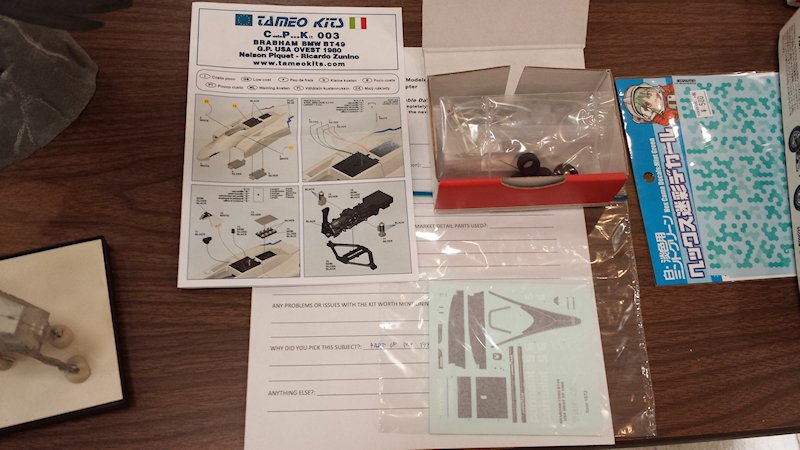
Larry also updated us on his "Tony Challenge", the Hasegawa 1/24th scale Nissan R89C LeMans race car. He's building it
out of the box and is using Tamiya, Alclad and Model Master paints. He's also added a black wash to the radiators to give
them depth. Larry says the build is "so far, so good" and it's pretty straightforward.
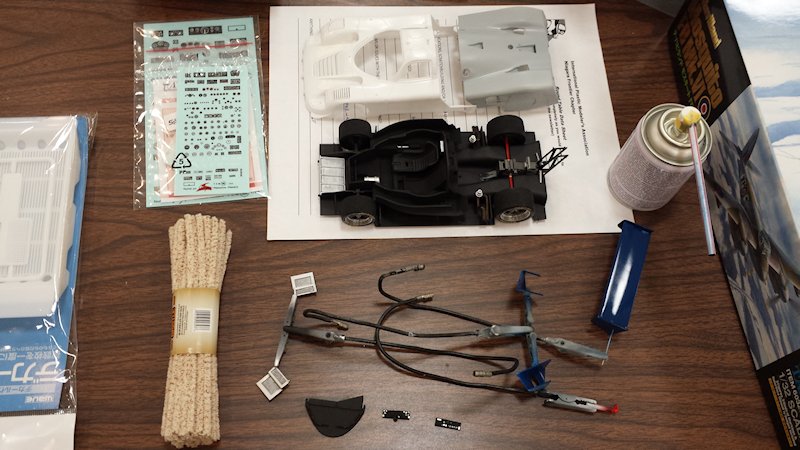
Dan Nethercott showed us his 1/50th scale "Drop Deck Trailer". Dan explains that the trailer is scratchbuilt and all
major parts (toolboxes, frame rails and suspension) are all bare styrene. He's used Testor's spray paints for the color
coats and Minwax stain for the wood decking. Bare Metal Foil was used for the trim. Dan says he had some difficulties with
the foil, but it did eventually bend to his will. Dan's inspiration was to refine his scratchbuilding techniques, add to
his heavy equipment collection and to enter it into an Ohio contest at the end of July.
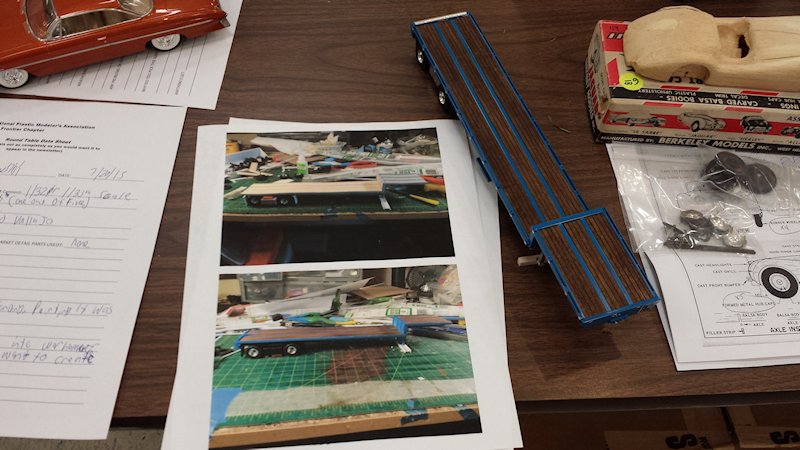
Rich Bernecki brought in the brand-new Tamiya kit of the DeHavilland Mosquito Mk. IV in 1/32nd scale. He said the kit was
first made available via the Canadian market and he purchased it at Hornet Hobbies.
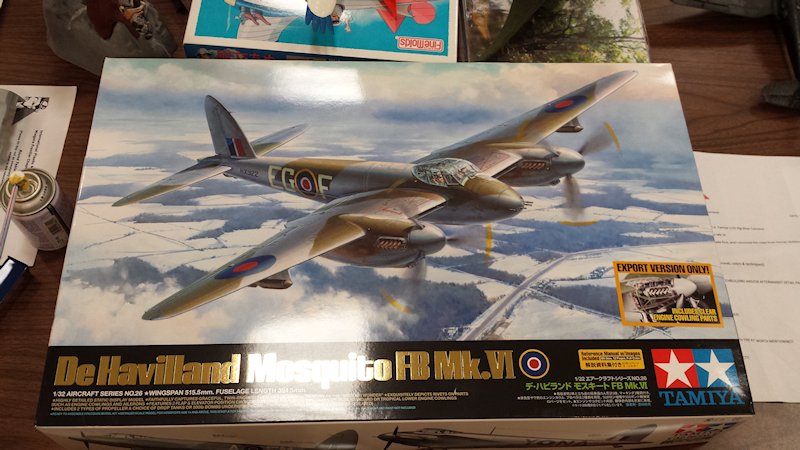
He also brought in his "Tony Challenge", the Tamiya Bristo Beaufighter in 1/48th scale. Rich built it "out of the box"
for the contest and used the supplied decals for the seat belts.
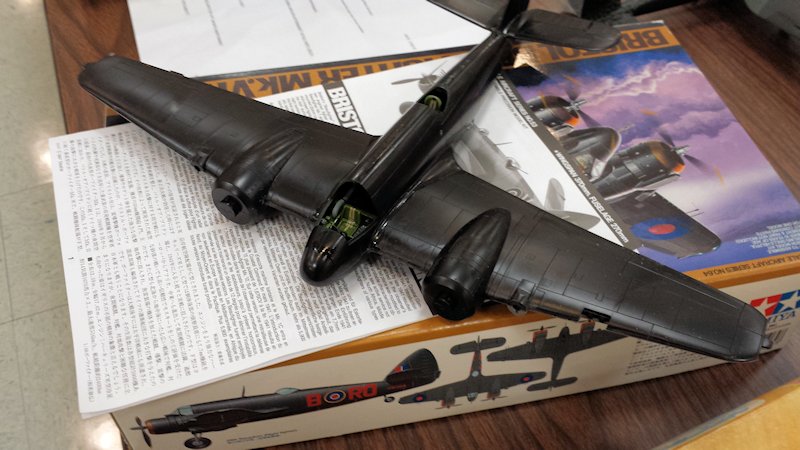
Jason Masarik demonstrated some very eclectic and interesting modeling pieces last month. A "Spacemarine Helmet",
"Witchking of Angmar Battle Helmet" and a "Tusken Raider helmet/mask". Materials used to create these impressive scratchbuilt
projects include: machined aluminum, tomato paste cans, pop bottle caps, brass plumbing pieces, leather wraps, monk's cloth
and liquid resin. It just goes to show how using non-traditional modeling materials and creative "imagineering" can produce
masterful results.
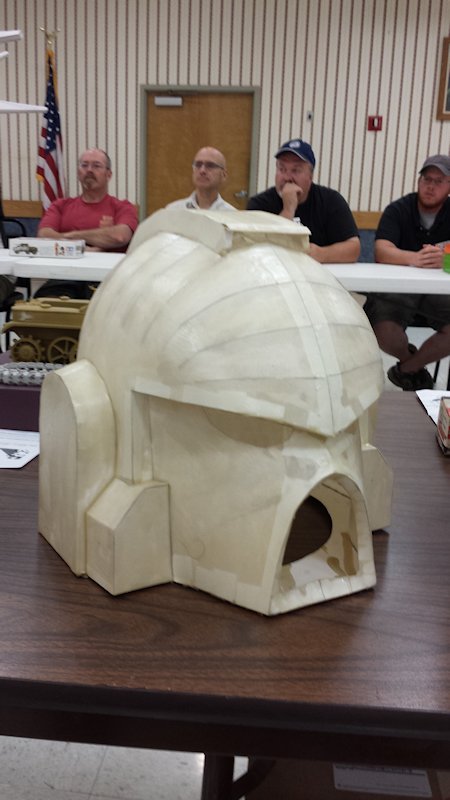
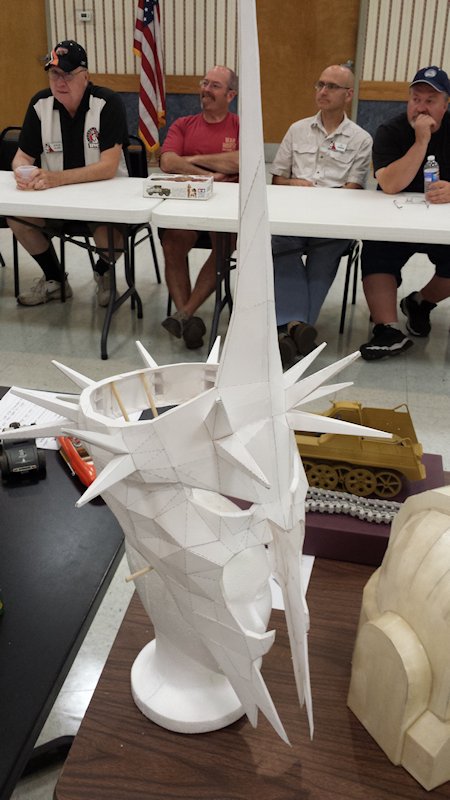
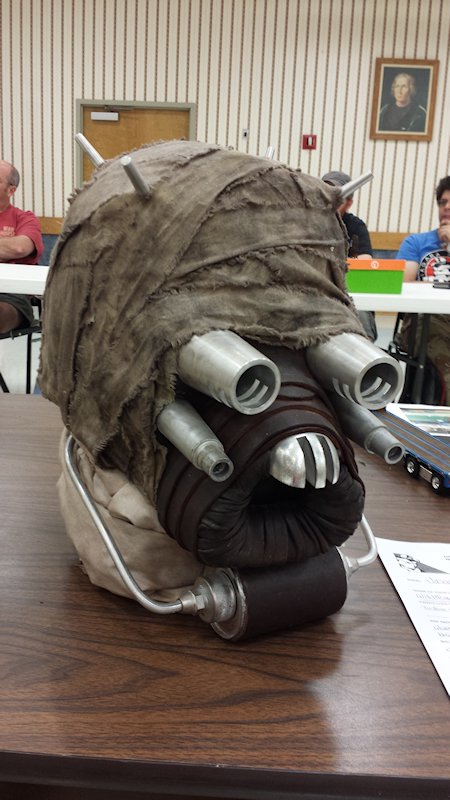
Matt Keysa showed us his works in progress for this month. His "Challenge" is the FW-190A-5 in 1/48th scale. He says the
engineering of this kit is poor, but he's working through it. He's also working on the Dragon 1/35th scale BRDM armored car.
This kit is "rough" and he's using it to practice his painting techniques. Lastly, Matt is building the Mirage 1/72nd scale
7TP "Twin Turret". Matt also explained that he uses copper coated steel BB's placed in his paint bottles to help mixing the
paint when shaking the bottle. Nice tip, Matt - thanks!
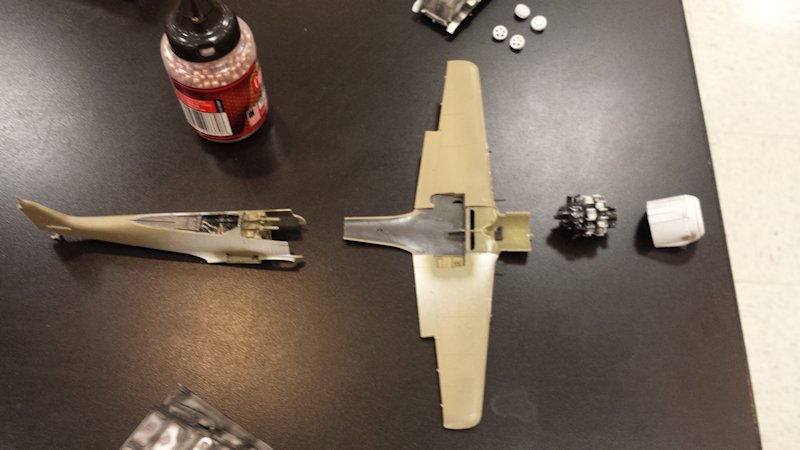
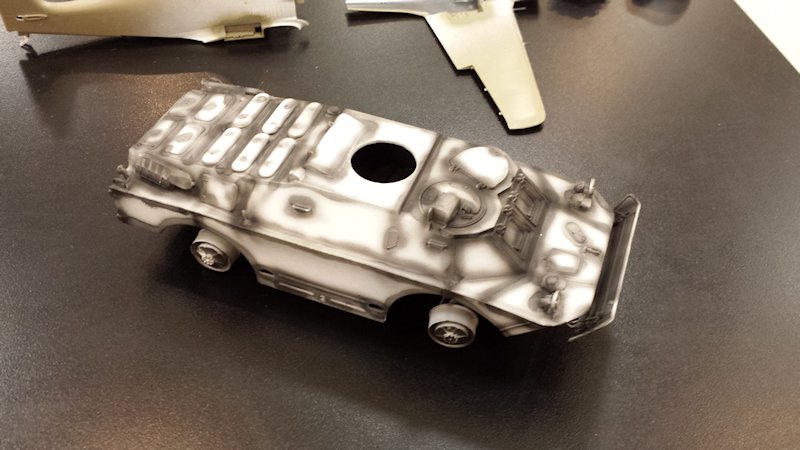
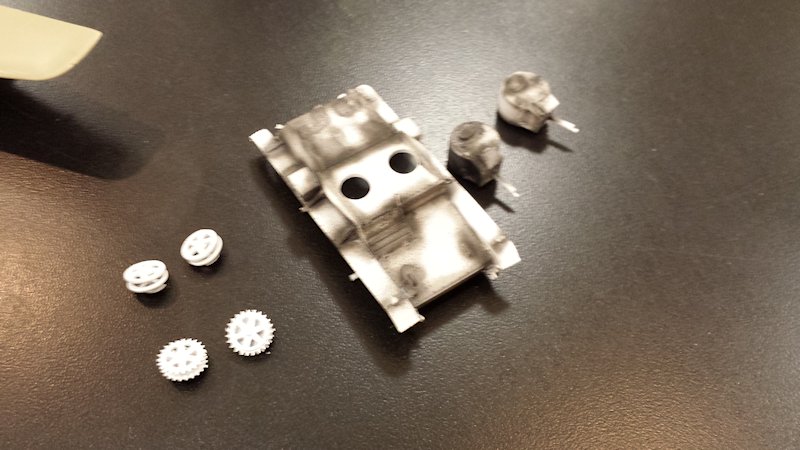
Clint Keidel brought in some cars he built a while ago. First is a Monogram 1/25th scale 1934 Ford Cabriolet hot rod. The
body is channeled over the frame, uses wheels from a '41 Plymouth, scratchbuilt wiring, carb stacks, exhaust and he flocked the
interior. He used Testor's red and white for the paint job. His second model is a Monogram 1949 Mercury Coupe - Chopped. Clint
says this is an "on and off" project. So far, he's removed and chopped the windshield posts, made side trim and skirts from
plastic sheet, Frenched headlights and scratchbuilt the tail lights. The bumpers are from an AMT "Parts Pack". Lastly, he showed
off a Monogram '31 Ford Coupe. He kit-bashed parts to create the final model, including wiring, screen for the grill insert, and
a masking tape roof insert. He used Rustoleum primer and Testor's paints, and hand brushed the flames on the car body.
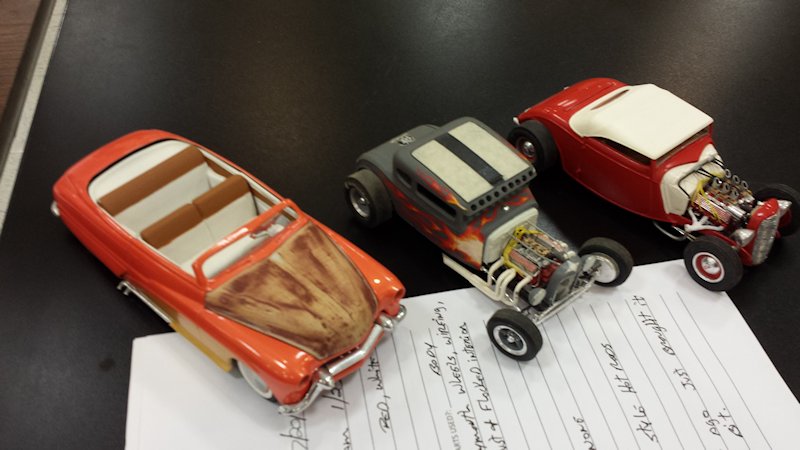
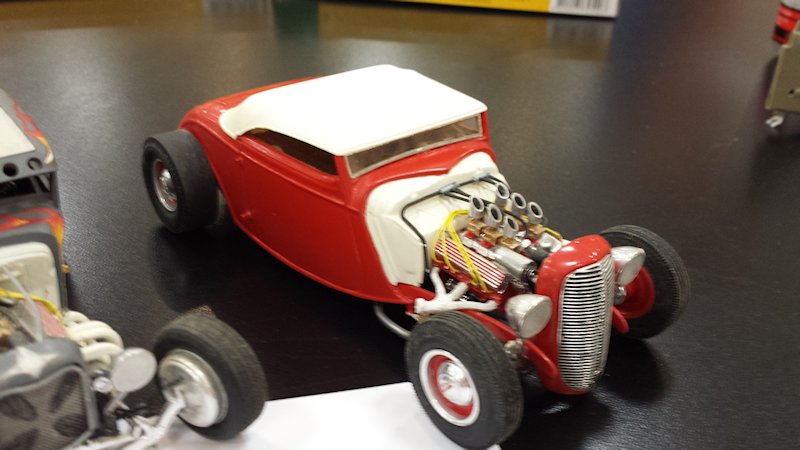
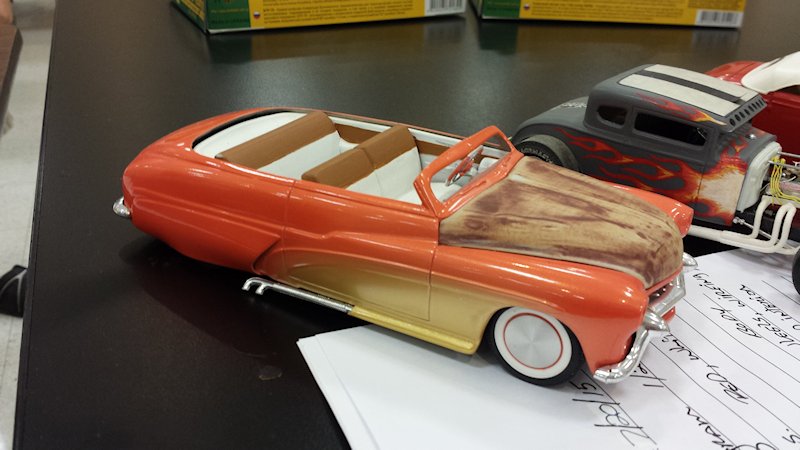
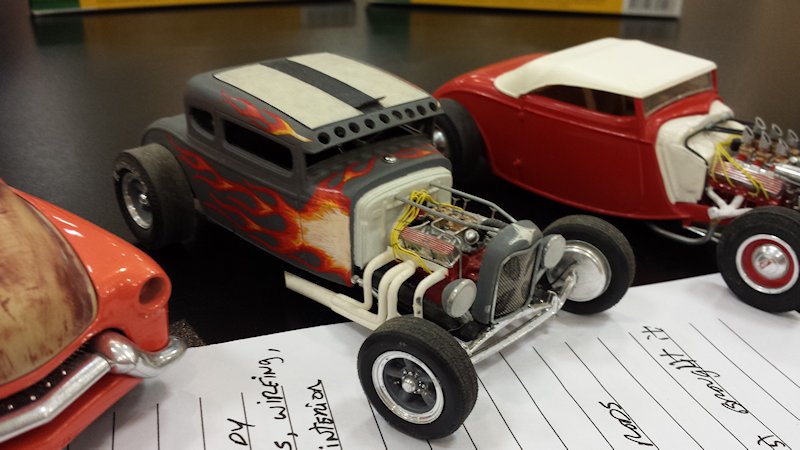
Mark Bundiewski demonstrated a work in progress, a Berkley Models 1/25th scale Jaguar. In fact, this is a retro kit from
the early 1950's made of balsa wood. Mark explained that someone else started the build and apparently abandoned it. The
original builder carved too much away in some spots, so he's going to have replace and refinish these errors. Mark further
relates that this will have to be put aside for a while so he can finish his "Tony's Challenge" entry in time.
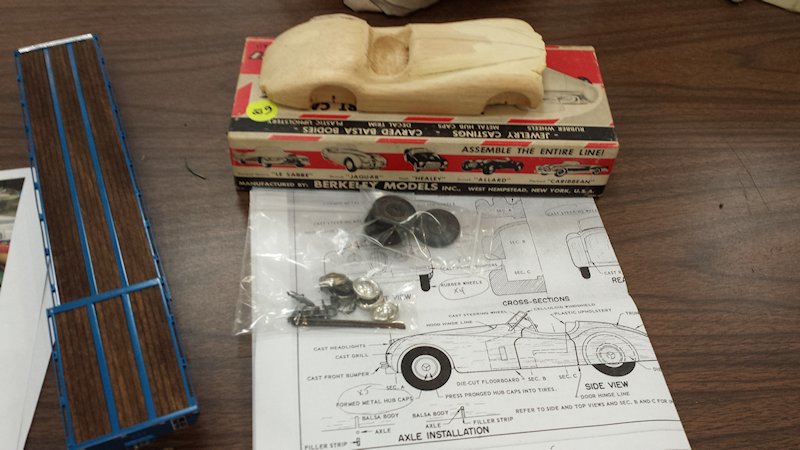
Matt Klukowski is planning on building a "War Bond" diorama and using this Master Box "Pin-Up" in 1/35th scale. He's
used Citadel and Vallejo paints to finish it and said that the sanding and painting was "not a problem".
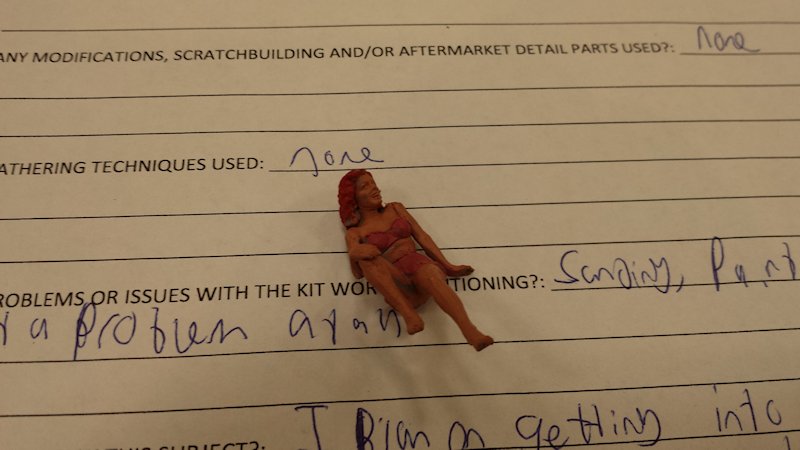
Justen Hanna is especially proud of his recently completed Special Hobby 1/48th Sopwith Schneider. He used Tamiya paints
throughout the project and weathered it with artist's oils. He said this was the first time he used the "dot filter"
technique of weathering. He further related that there was lots of pinning to get the struts to seat correctly and the nose
needed extensive re-working as it didn't fit.
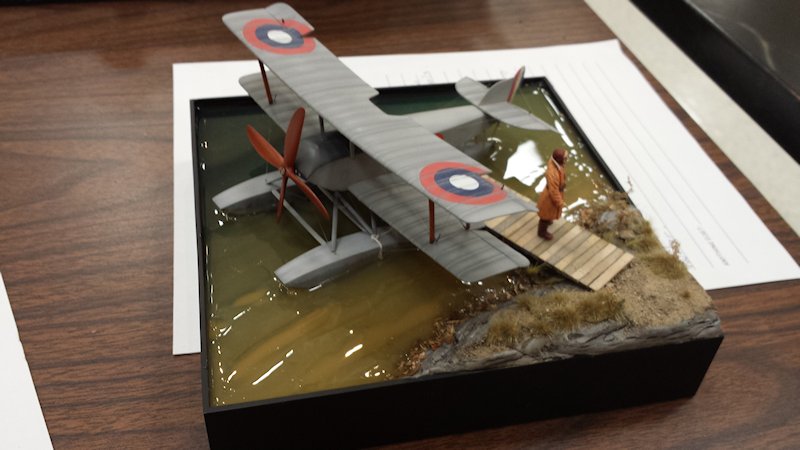
Justen also showed us his "Tony's Challenge" project, the Classic Airframes 1/48th scale Boulton-Paul "Defiant" night
fighter. Much attention had to be placed on alignment and plenty of body work was needed to get it looking right.
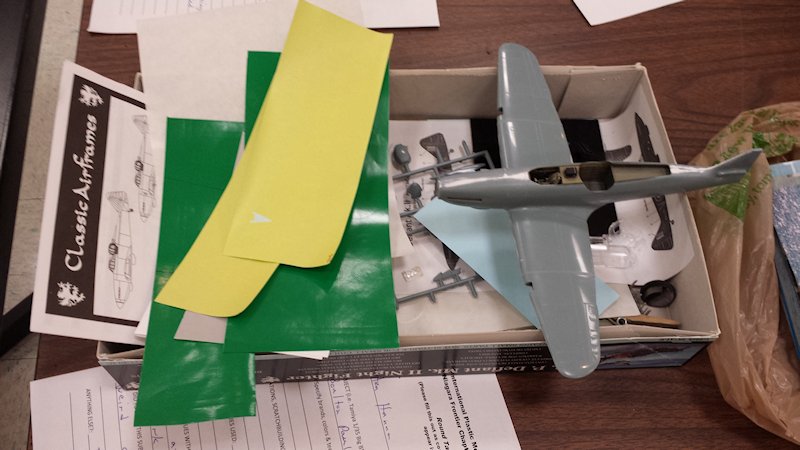
Jason Ignatjew brought in his 1961 Oldsmobile Super 88 Jimmy Flinstone resin kit. Despite the warped body, Jason got it
straightened out and painted it with Testor's One-Coat Firey Orange followed up with Testor's One-Coat Lacquer.
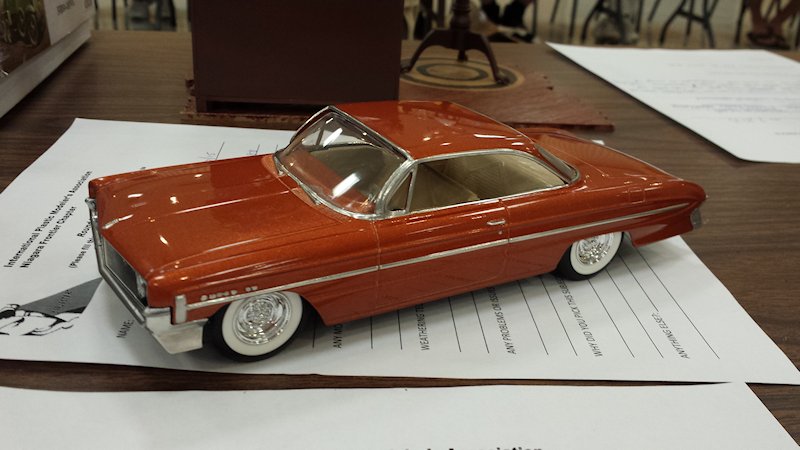
Samantha Hanna is working on a Hobby Boss Soviet BA-3 Armored Car in 1/35th scale. She's not impressed that the engine
doesn't fit the frame.
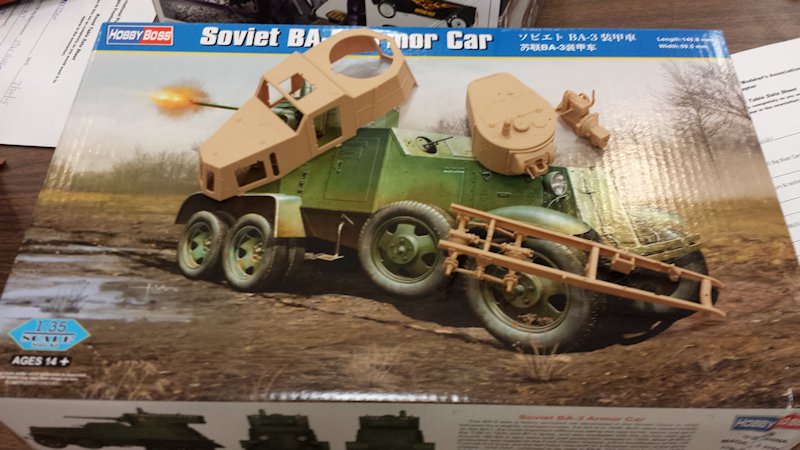
John Zachritz was very busy these past few months and has FIVE items on display. The first is Fine Molds 1/48th Jiro's
"Bird Plane" from the Wind Rises anime series. John said that the fit of the kit was so good, that it could have been a
snap-tite kit. He simulated the spinning prop by cutting out some plastic from a blister pack and a fine point Teal Sharpie
pen was used to draw the cross design on the pilot's robes. He dry brushed the engine block edges and rust the exhaust
stacks the same way.
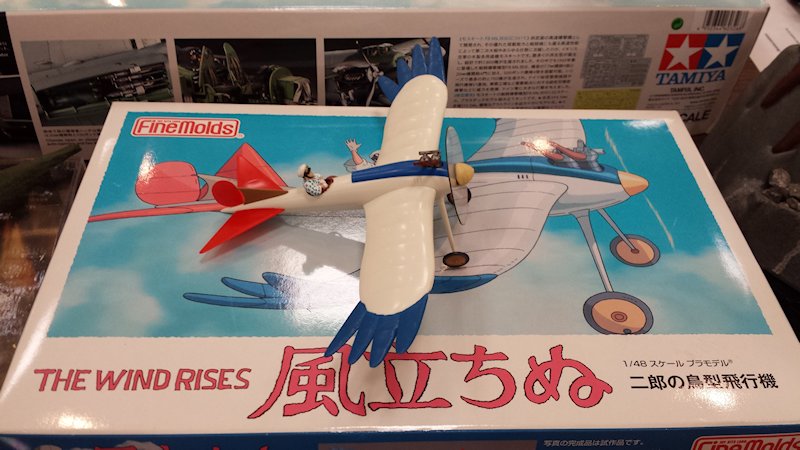
His second model is an "ATAT Dog Drinking From Toilet". The ATAT was obtained from an old MPC "Battle For Hoth" diorama
kit and he brazenly stole the toilet from his wife's dollhouse. He also sourced some detail from tile cut from samples
obtained at the Home Depot.
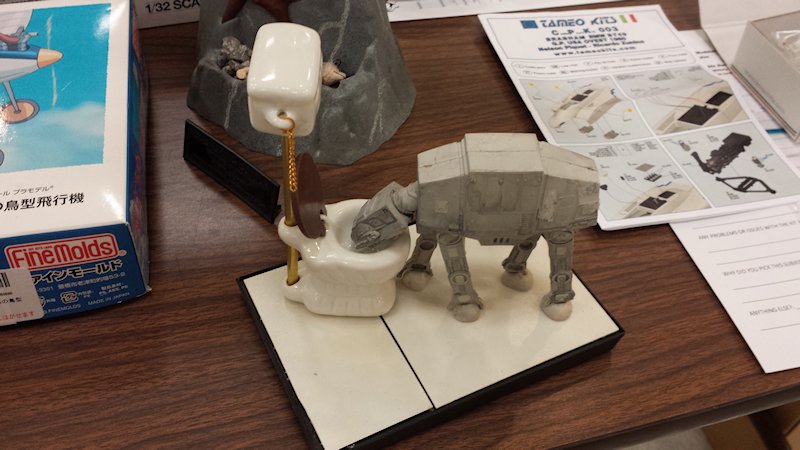
Third, the MPC Brontosaurus kit from 1982, built by club member, the late Ray Weicke. John puttied and painted it. He
also used lily pads obtained from Hobby Lobby's clearance aisle. John may include this in a water diorama in the near future.
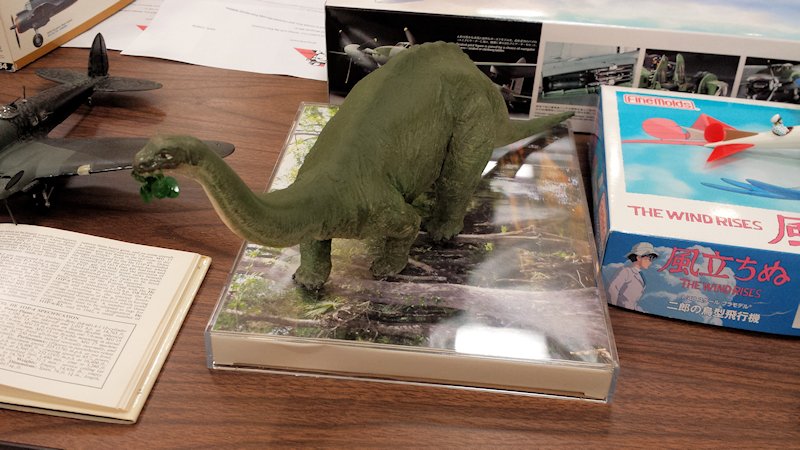
Fourth, another model obtained from Ray's estate is the California Condor from Revell's Endangered Species series. The
diorama includes a dead coyote amidst gravel to indicate a rock slide as the "cause of death".
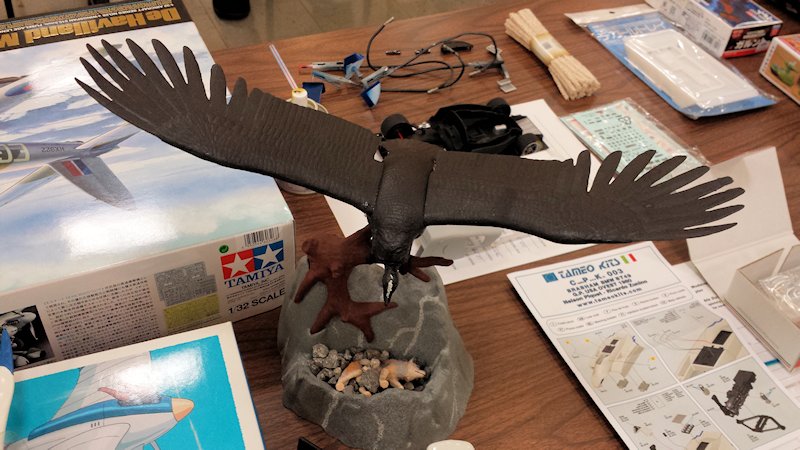
Lastly, but certainly not least, is the Emhar 1/72nd scale Mark IV Female British Tank from the Great War. John says
that the build was straightforward and he drybrushed rust and steel for highlights. The anti-ditching sticks were simulate
by cutting the bristles from a push broom. The decals are from the anime show, "Girls Und Panzer". He will be adding scale
chains to the model shortly.
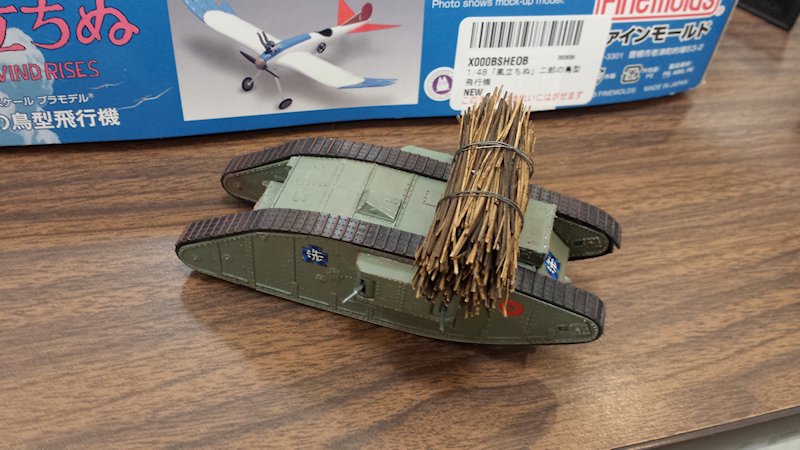
Ilya Grinberg brings us three models this month: a US-G Studebaker, an ACE T-60 and an ACE BTR-70, all in 1/72nd scale.
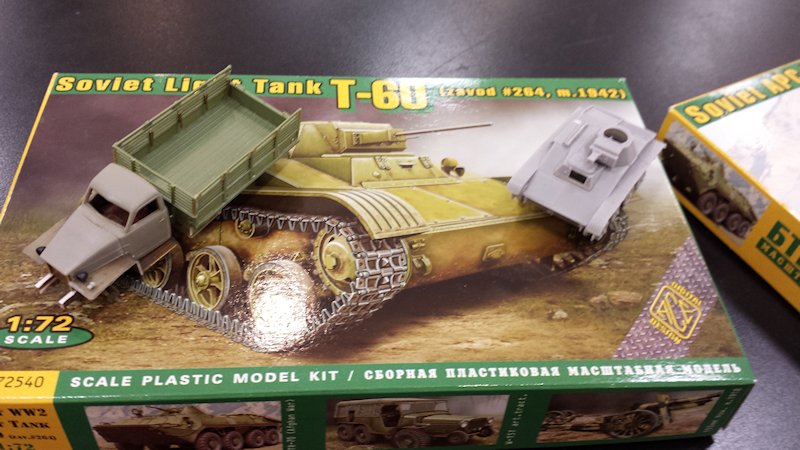
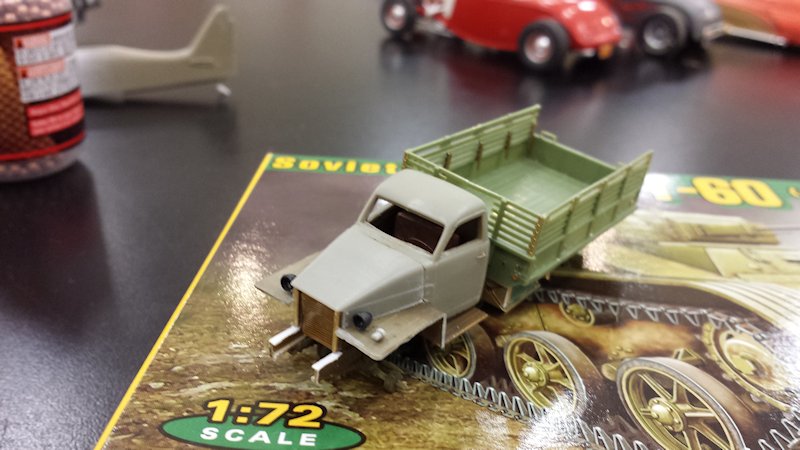
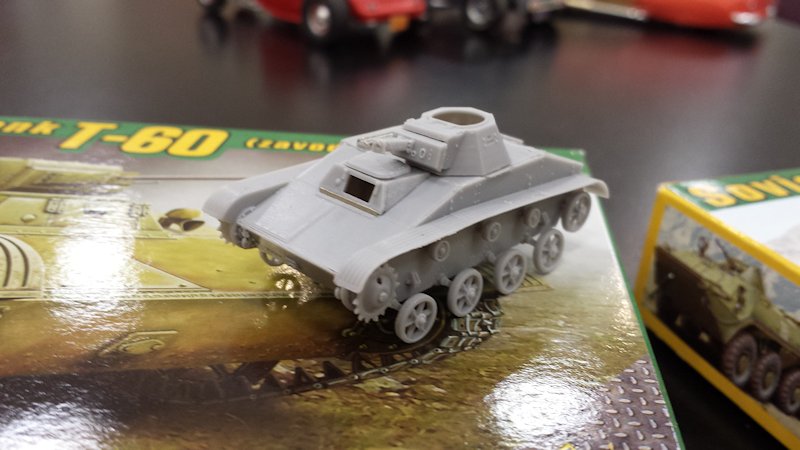
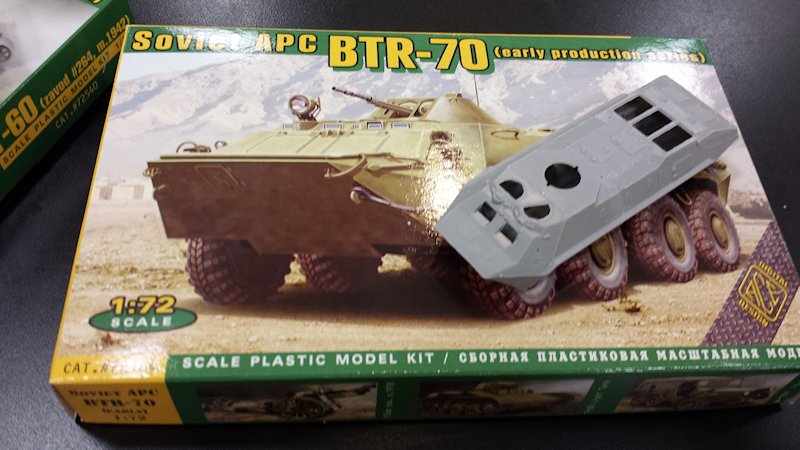
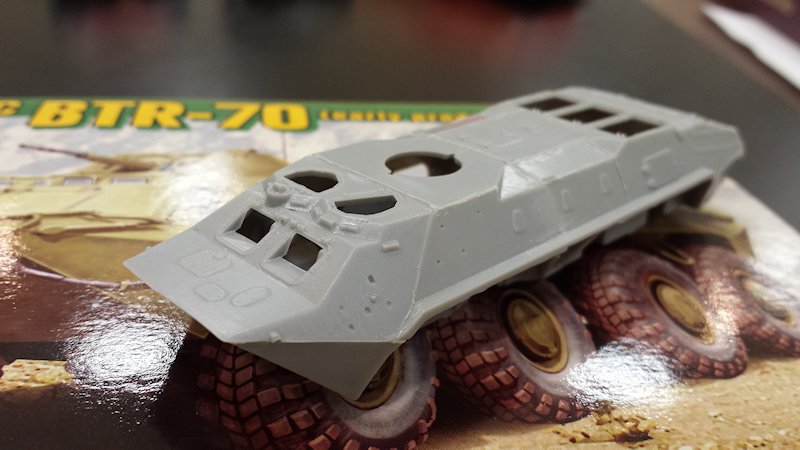
Tom Faith is demonstrating the progress on his "Tony's Challenge", the Hobby Boss "Land Wasser Schlepper" in 1/35th
scale. Tom is "going to town" with loads of aftermarket details including Grandt Line nuts and bolts, Voyager brass and an
engine from a Panzer IV. He's also scratchbuilding the engine compartment. Despite all the glorious detail, Tom is
lamenting the fact that the photoetch brass parts are "too small to handle".
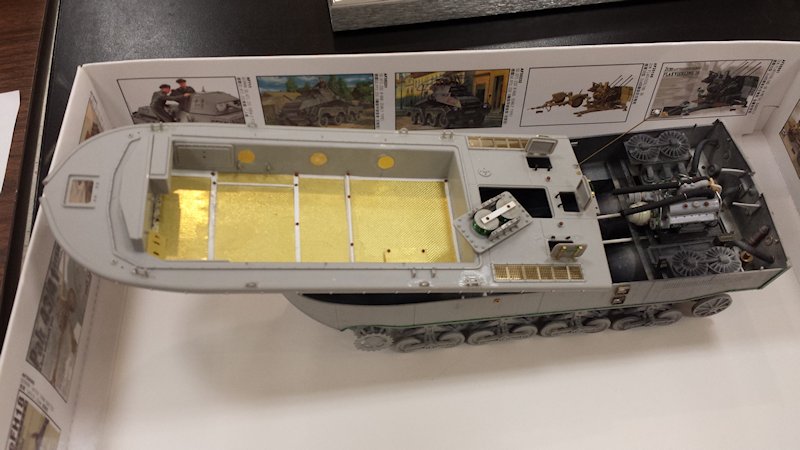
Our resident artist, Paul Hines, brings us some fine automobile drawings: "Green 5" window coupe with triple carbs;
"Chopped 3" window beautifully proportioned with flames; "Outlaw Anglia" popular gasser and "Willy's Gasser" jumping off
of the line. Paul says he's planning on more "cool hot rods" then later in the year will being doing some vintage 1900 cars.
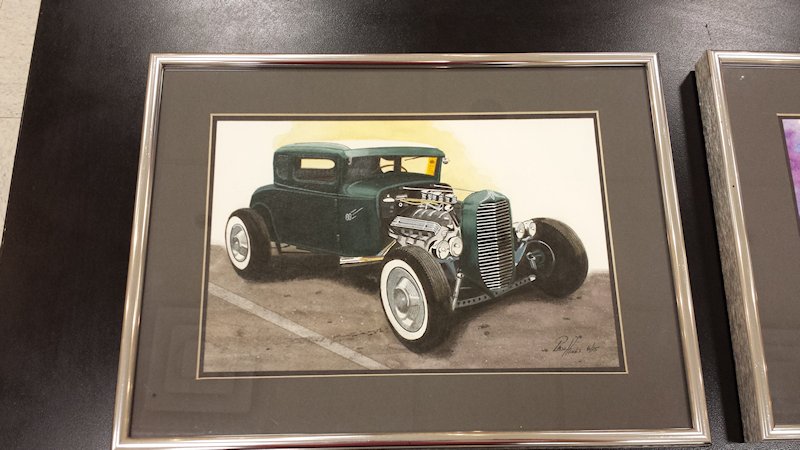
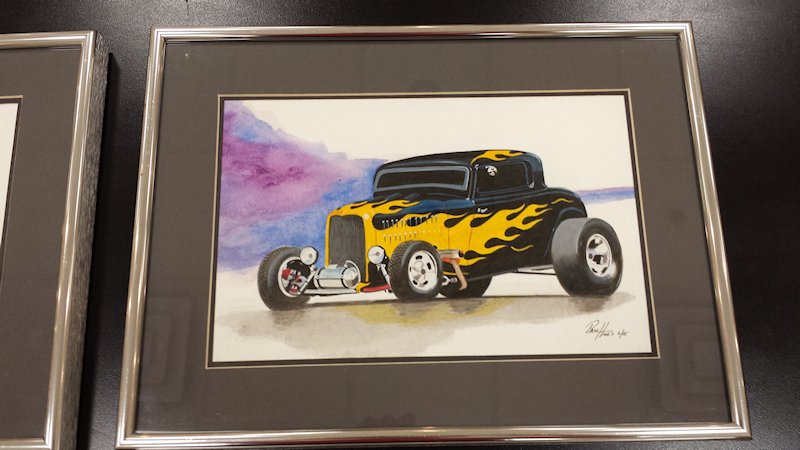
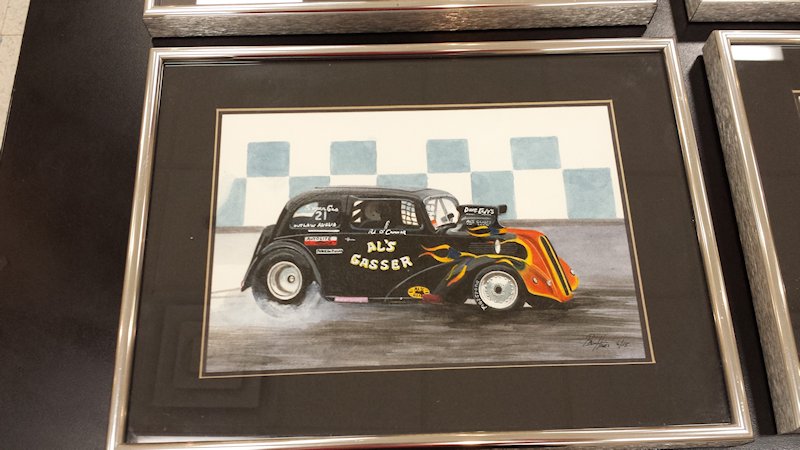
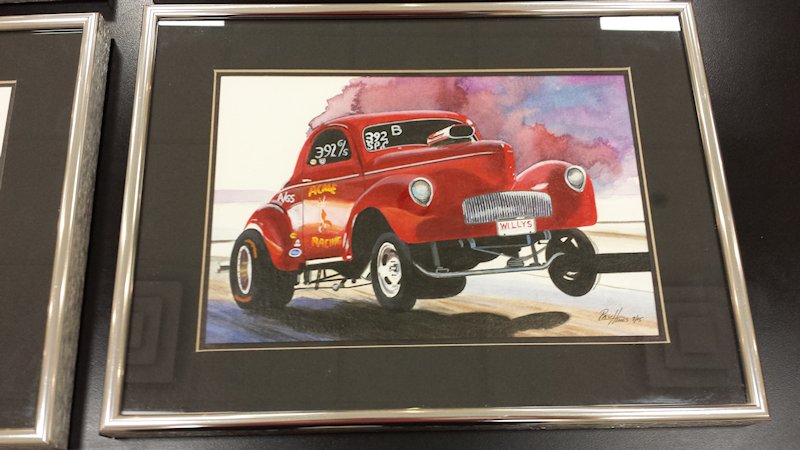
Al Germann obtained some interesting kits from a recent trip to Japan. A Bandai "Cosmo Zero", Hasegawa "Space Wolf",
an Aoshima "Gorilla Mini-Bike", a BanDai "Magella Attack Tank" and another BanDai "Attack Spacecraft" along with some
accessories. Al says these kits aren't available in the States and the exchange rate was pretty good.
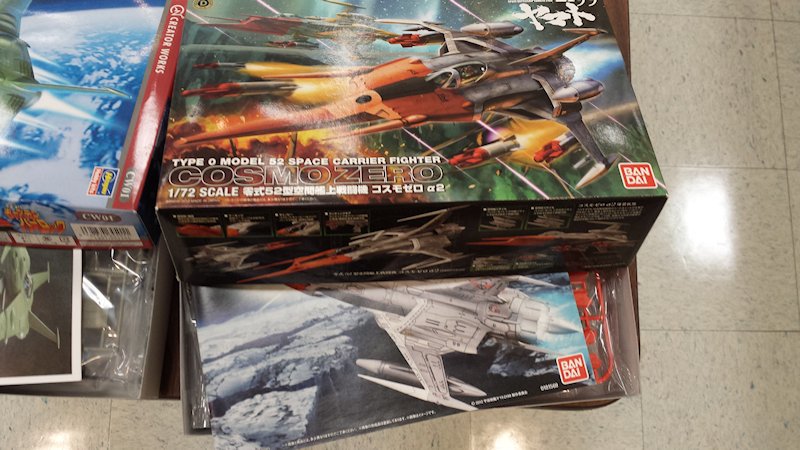
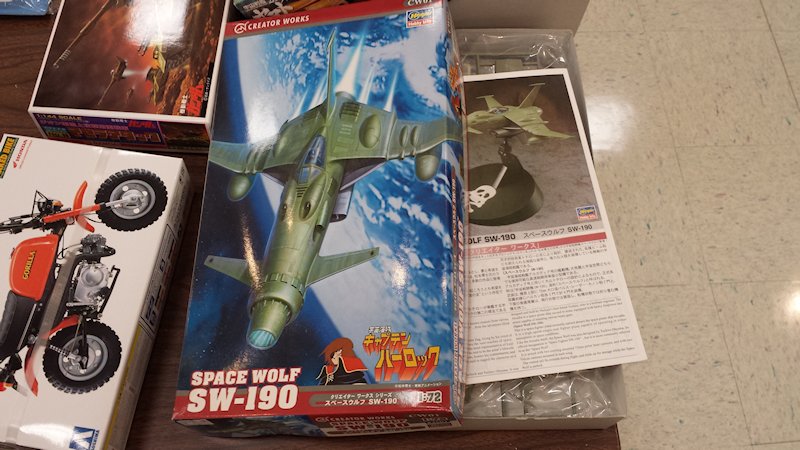
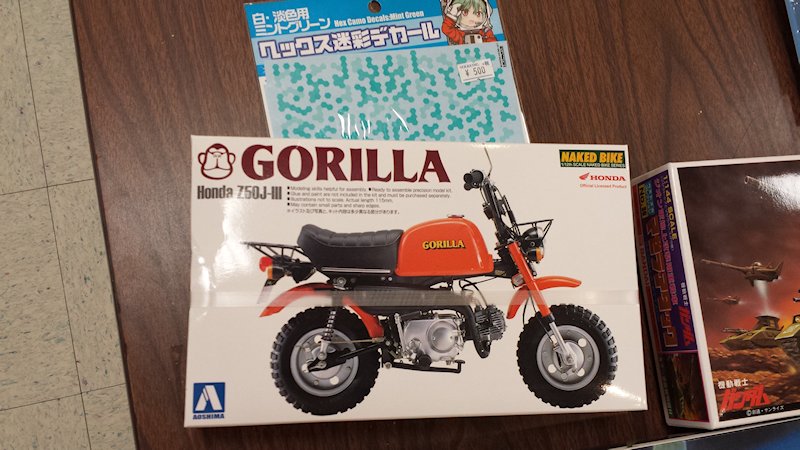
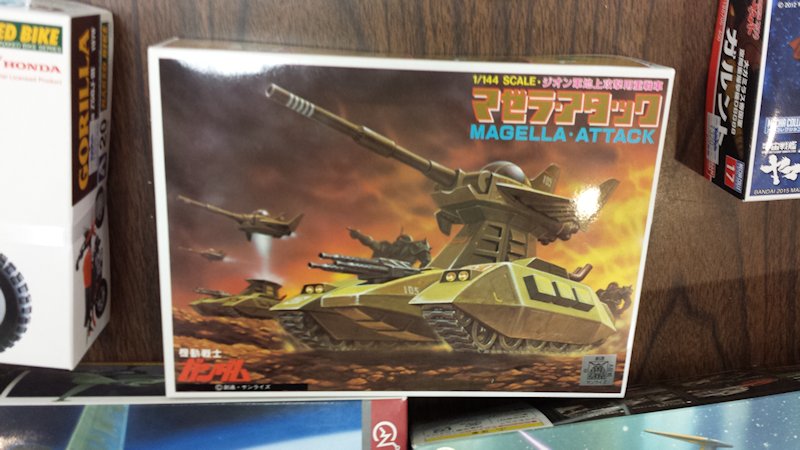
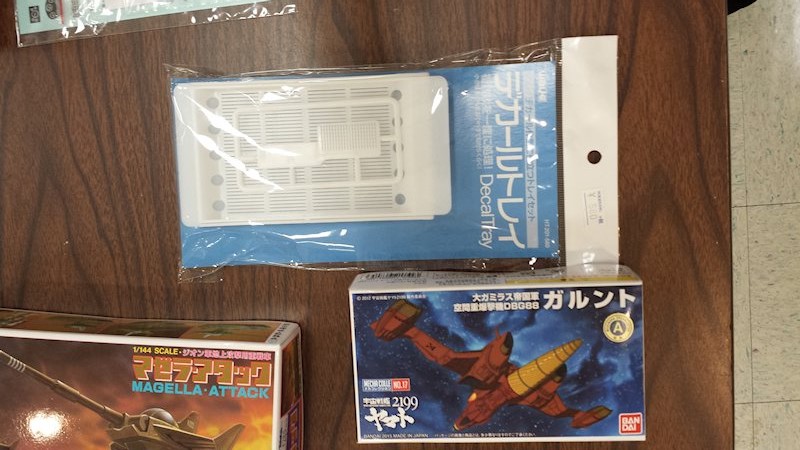
Jacob Gadek presented his Moebius "Invisible Man" project. He painted the floor boards different shades of earth, tan
and beige and cleared it off. He then applied wood stain to the paint and wiped that off to get an authentic wood look to
the plastic. Despite all of his efforts, some of the effects turned gray on him and it had to be done all over. Jacob says
he discovered the "world of humility" - welcome to the club, Jacob! He used clear silicone to glue the clear parts to the
tables and used a sticker set to add stripes to the Invisible Man's tie. Jacob is continuing to build his series of "old
time" radio and TV show themes.
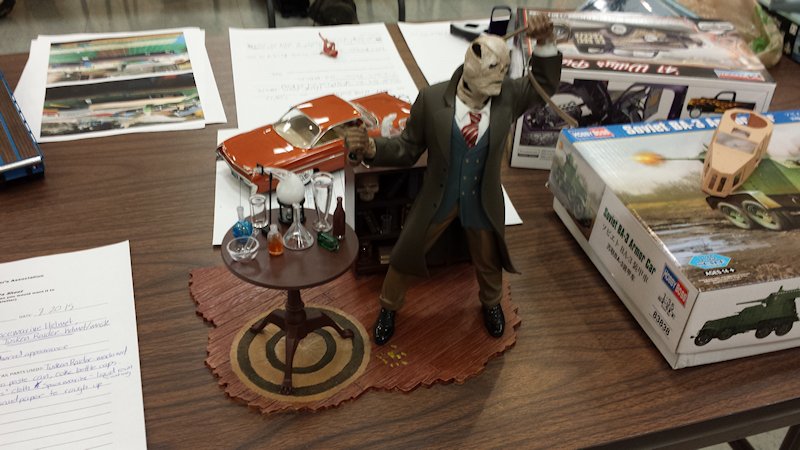
Tony Gliszczynski brought in his "Tony's Challenge", his Monogram 1941 Willys. Tony is not impressed with the overall
poor fit of the kit and stated, "IT NEEDS RE-TOOLING"! Despite his tirade, he plans on painting it purple when it's done.
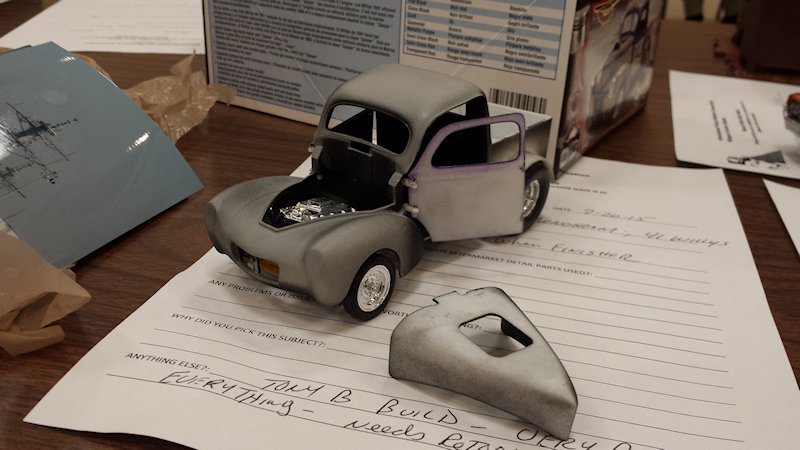
John-Allen Price did some extensive work on his Airfix 1/72nd scale Heinkel He-111-H4 Night Bomber as it appeared in
Norway in 1940. He added a "bathtub" insert and an semi-open dorsal gun position "borrowed" from a Matchbox kit. John-Allen
brush painted the kit in the standard Luftwaffe "day bomber" scheme to reflect the modified "emergency night bomber" finish
for this particular squadron (KG-26). This included a black wash over 2/3rds of the upper wings, a black "speckle" patter on
the aft fuselage and tail plane. He also added wear marks as well. John-Allen feels that this paint scheme give this aircraft
a "sinister" look to it.
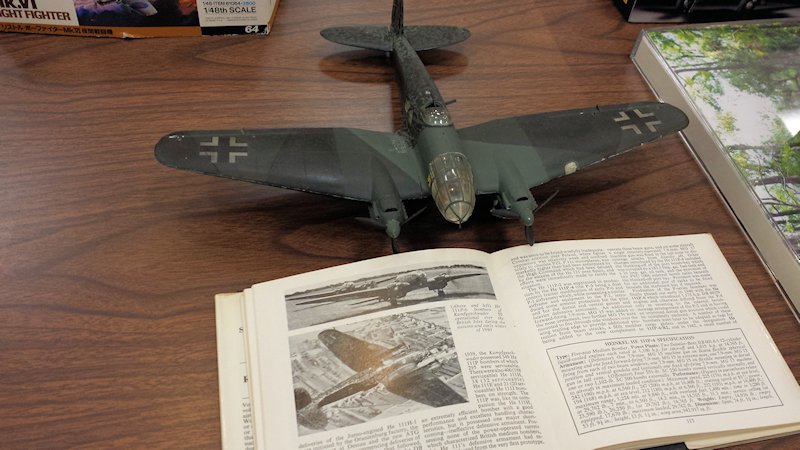
Last, President John Zaranek showed us what happens when we're not careful when we try to "fix" plastic parts. John's
work in progress is Heller's 1/400th scale "DeGrasse" Cold War French Anti-Aircraft Cruiser. The fore and aft deck parts were
slightly warped, so he decided to immerse the parts in hot water to soften them and place them under heavy books so they would
lie flat and attach to the hull without issues. Apparently, the water was too hot and rendered the plastic unusable. John then
scratchbuilt replacement deck part by tracing the appropriate sections of the hull onto sheet plastic. He cut and sanded the
replacement parts to shape and found that they were a "near perfect" fit. Any remaining gaps he filled with a combination of
superglue and "Microballoons" sanded smooth. All that remains is to cut out or scratchbuild the missing deck fittings from the
damaged parts and apply them to the new decks. Lessons learned: leave kit parts alone, or, nothing you do isn't fixable - take
your choice.
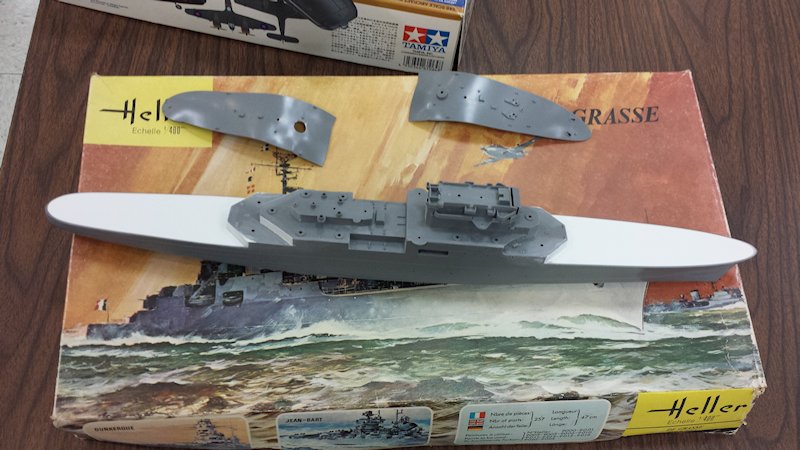
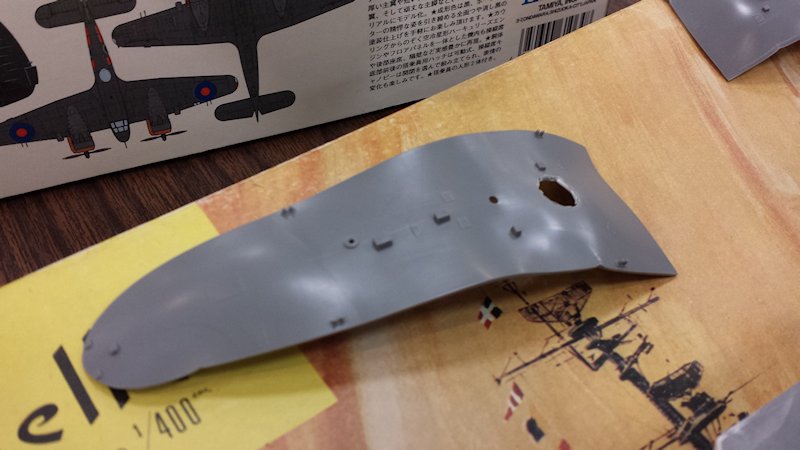
Finally, some remaining items on the tables, and a few around-the-room shots of the meeting.
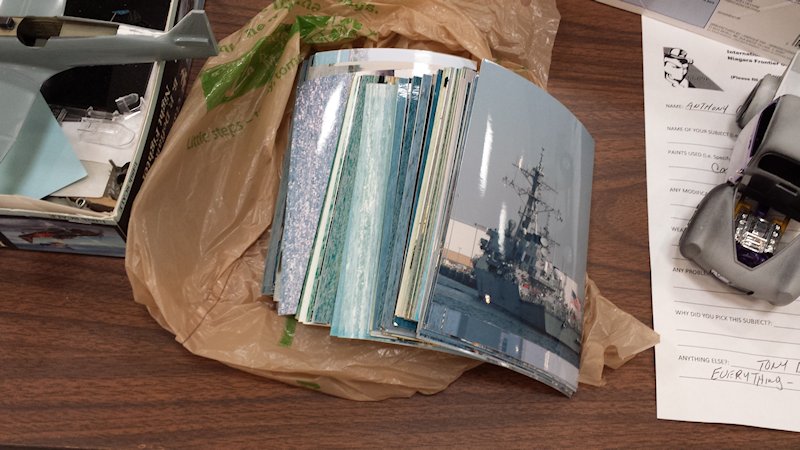
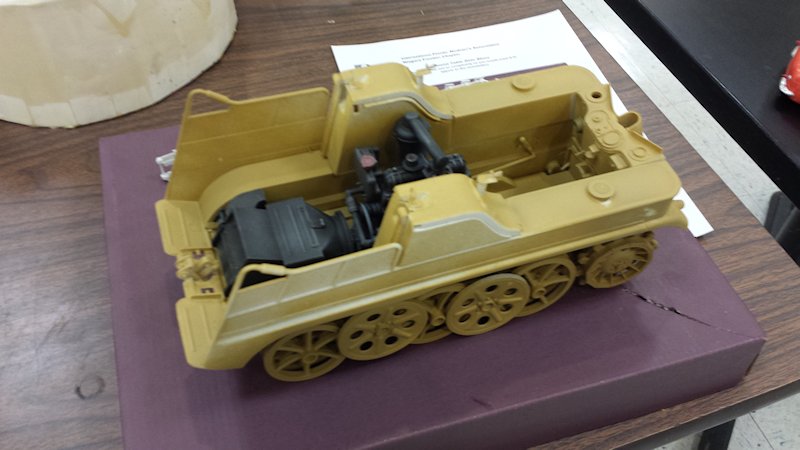
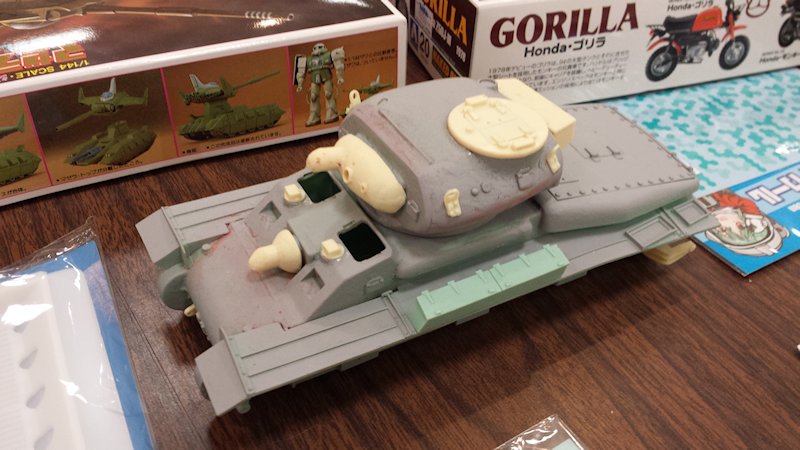
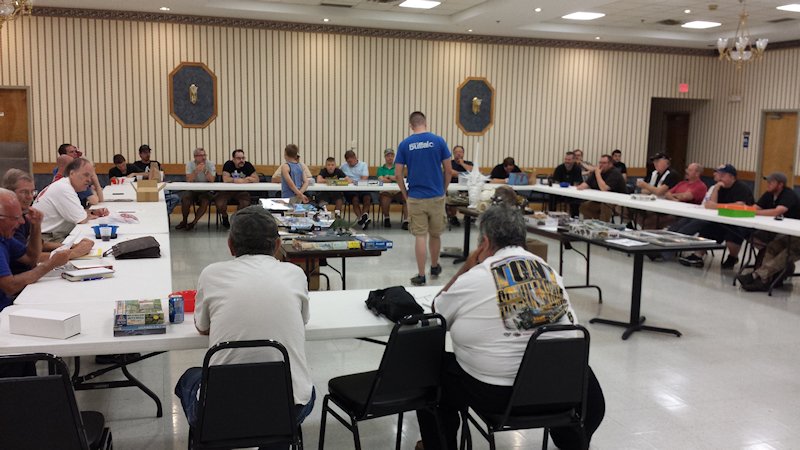
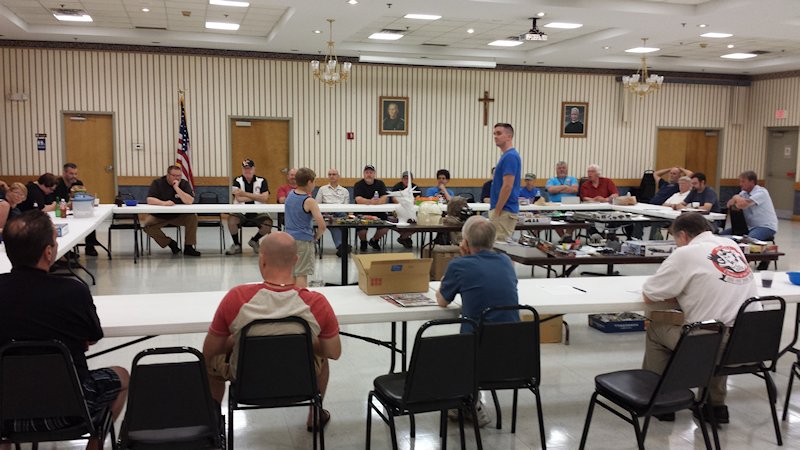
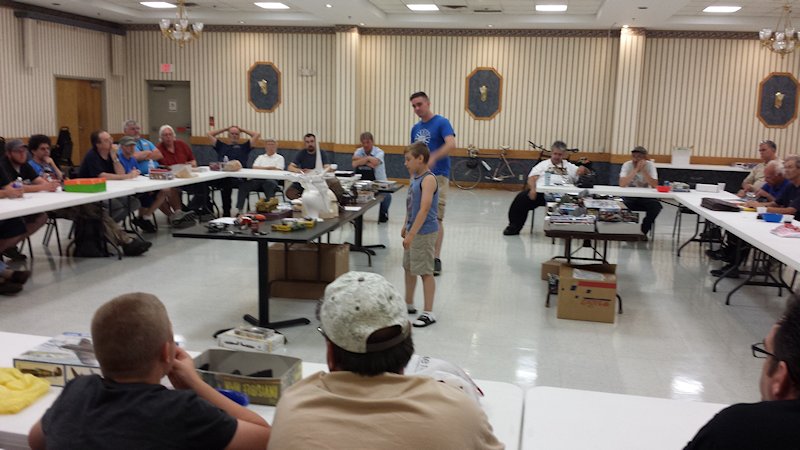
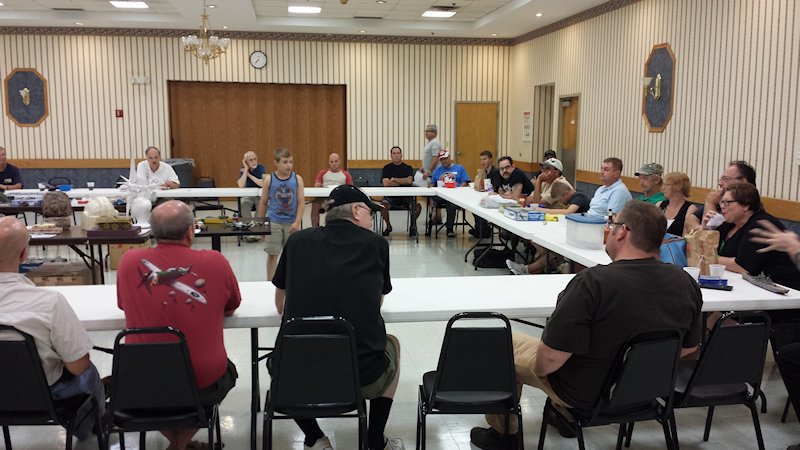
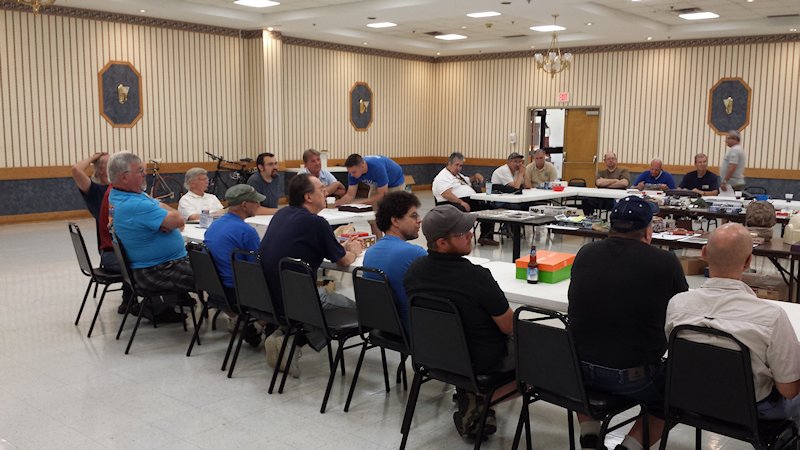
Thanks to Larry Osolkowski for the photography.
